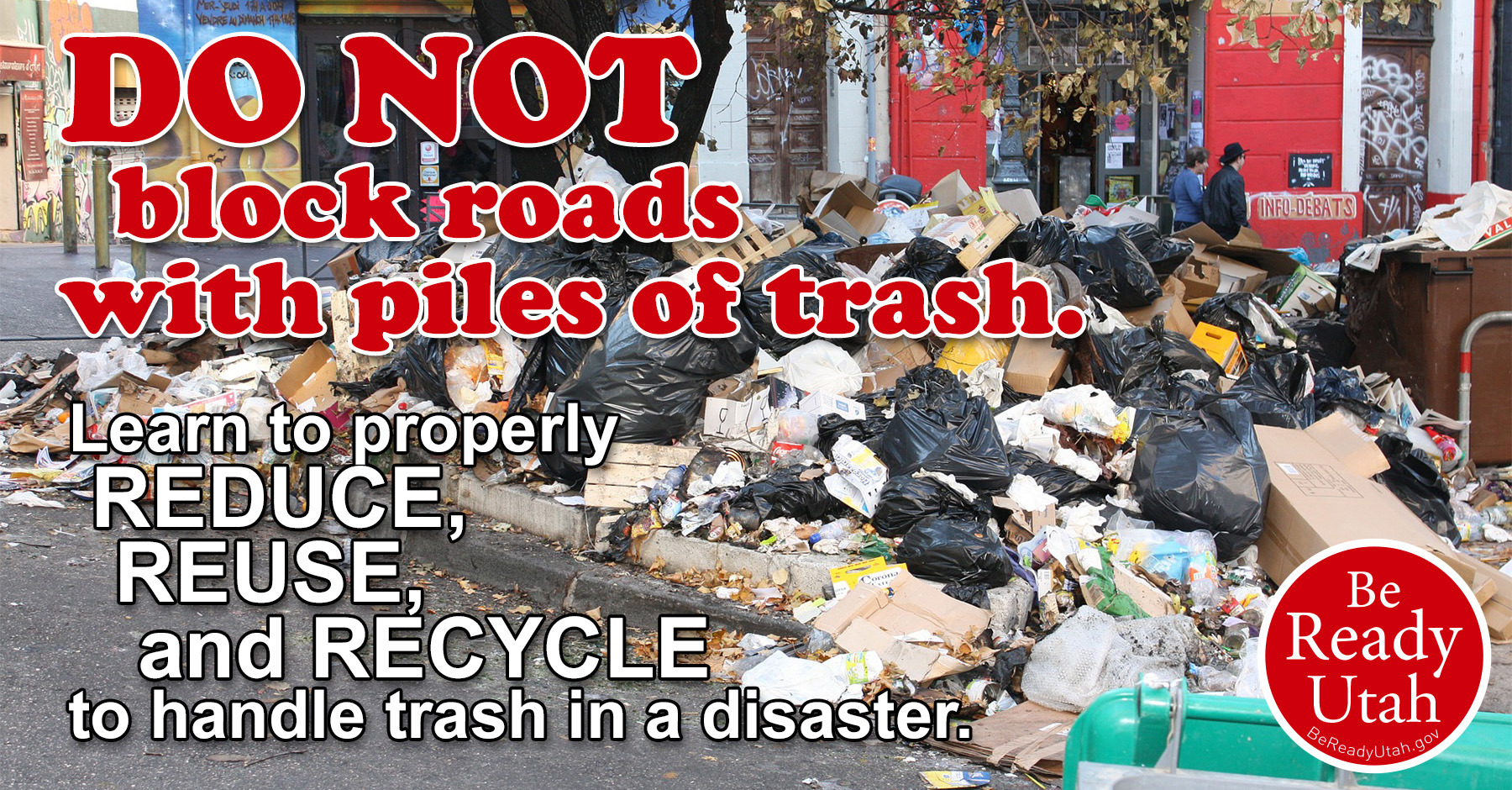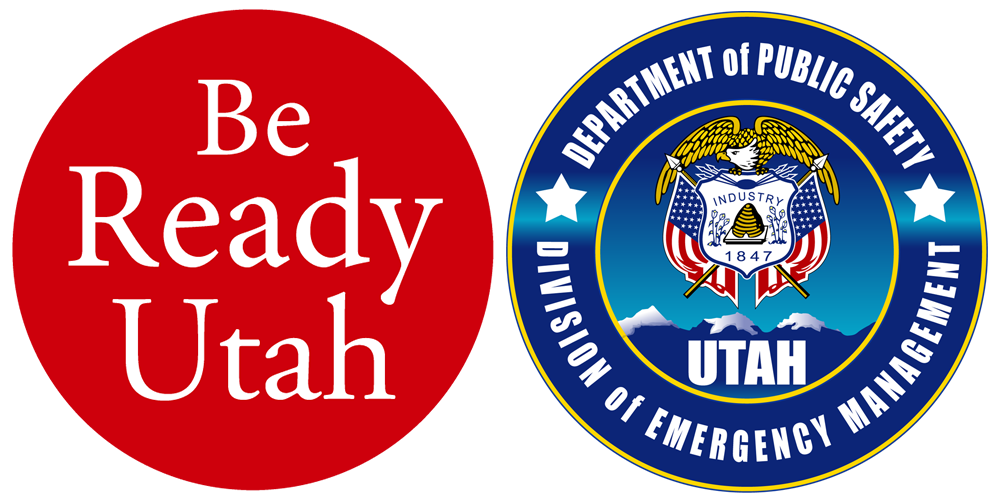Clean and Sanitize in an Emergency
THE POINT
The #1 rule in emergency sanitation is to keep yourself, your family and surrounding environment CLEAN. Learning how to perform daily tasks like washing dishes and laundry by hand are important skills to have.
Disasters create a lot of toxic and safety hazards. Cleaning them up can be dangerous if you don’t use proper precautions.
DO THIS
- Gather emergency sanitation supplies including at least one month or more of paper towels, garbage bags, and cleaning and disinfecting supplies.
- Gather supplies for doing laundry and dishes by hand. Teach household members how.
In an emergency situation, clean, drinkable water may not be easy to get. Conserve the water you have. Use it wisely, but not at the expense of proper hygiene and sanitation.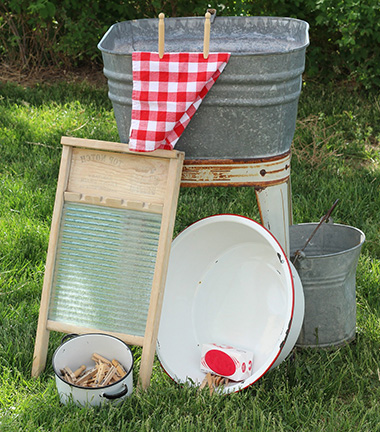
Laundry
In addition to cleaning your body, laundry can be done with a simple wash tub and a rinse tub. Use the hottest water you can stand in each. Wash in soapy water and scrub with a brush and a washboard, then squeeze out as much water and soap as possible. Rinse in clean water and squeeze out excess water again, then air dry on a clothes line. Include laundry detergent, clothes line and clothes pins in your emergency supplies. If you want to invest in a clothes wringer, it will squeeze out more water and detergent than you can with your hands alone. They can be found online and in specialty stores. In a pinch, you can also use the wringer of a commercial mop bucket to get the water out.

Plunger Laundry Washer
An easier way to wash laundry than the wash board is with the plunger style laundry washing tool (found online and in specialty stores). Fill a bucket or wash basin with warm, soapy water. Loosely add a few articles of clothing. Don't pack them in, they need to be free floating. Pump the plunger up and down one or two dozen times on the clothes in the water, forcing the water and detergent through the clothing. If you have a stubborn stain, you still may need to use the washboard and brush. Lift the clothing out of the soapy wash water and squeeze as much water out as you can back into the wash bucket or basin. Place the wet, soapy clothing into another bucket or basin full of clean rinse water. Use the plunger on it another couple dozen times in the rinse water to push the detergent out of the clothing. Pull the clothing out, again squeezing out as much water as possible, and hang up to dry.
If clothing has been in contact with flood water, bodily fluids, or waste, it must be disposed of or washed and disinfected. Wash contaminated clothing separate from other clothing using hot water and detergent. One half cup of standard unscented liquid household sodium hypochlorite bleach can be added to two to three gallons of laundry wash water to kill germs and disinfect. The laundry items must soak for ten full minutes to be sanitized. Be sure to thoroughly rinse the clothing in hot and clean rinse water before wringing and hanging to dry. Cloth diapers must also be washed and disinfected separately from other clothing.
Washing Dishes
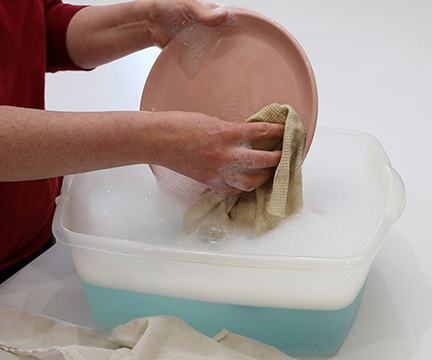 As for washing dishes, for short-term to save water, use paper plates and cups for serving and eating food. This being said, paper products are not practical for long-term use and create a lot of unnecessary trash. Washing dishes by hand is an easy skill to learn and a good one to teach children. Before washing your dishes, pots, pans, cups, and utensils, scrape off as much excess food, grease, and anything else into the garbage to keep your wash water as clean as possible. This may be easiest right after cooking and right after eating, before food dries and sticks. Remember you are trying to conserve water. Dunk your dishes in a basin of warm, soapy water and wipe them with a cloth or scrub with a scrub brush to remove any remaining food particles. Be thorough. Leftover particles of food on the dishes can contaminate your next meal and make you sick. You may want to include bottle brushes and scouring pads in your dish washing supplies. After the dish is clean, wipe off the excess soap and dunk it in a second bin full of very hot and clean rinse water. Then towel dry and put away or put in an air drying rack and put away when dry.
As for washing dishes, for short-term to save water, use paper plates and cups for serving and eating food. This being said, paper products are not practical for long-term use and create a lot of unnecessary trash. Washing dishes by hand is an easy skill to learn and a good one to teach children. Before washing your dishes, pots, pans, cups, and utensils, scrape off as much excess food, grease, and anything else into the garbage to keep your wash water as clean as possible. This may be easiest right after cooking and right after eating, before food dries and sticks. Remember you are trying to conserve water. Dunk your dishes in a basin of warm, soapy water and wipe them with a cloth or scrub with a scrub brush to remove any remaining food particles. Be thorough. Leftover particles of food on the dishes can contaminate your next meal and make you sick. You may want to include bottle brushes and scouring pads in your dish washing supplies. After the dish is clean, wipe off the excess soap and dunk it in a second bin full of very hot and clean rinse water. Then towel dry and put away or put in an air drying rack and put away when dry.
Disaster Cleanup
When dealing with the aftermath of an emergency situation, it is important to protect yourself from floodwater, mold, sewage, and other toxic hazards while you cleanup. Use personal protective equipment (PPE) like goggles, rubber boots, and rubber gloves. An N-95 mask will also protect you from breathing airborne hazards. If you are doing heavier cleanup, it is recommended that you wear a hard hat, heavy work gloves, and steel toed boots.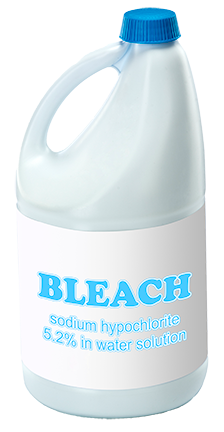
One of the best cleaners is standard, household, unscented bleach, more specifically, sodium hypochlorite. This is effective for making sanitizing and disinfecting cleaning solutions used in cleaning surfaces and objects that may have come into contact with biological contaminants that could cause illness and disease. Never use bleach full strength to treat any soft or hard surface. Bleach should always be diluted with water. Only mix enough cleaning solution for what you will use for that job, that day. NEVER mix bleach with ammonia, ammonia based cleaners, or any other cleaners. It can produce a toxic gas that can be deadly.
According to The Clorox Company, use a 1500 ppm solution for general disinfection of many organisms such as MRSA, E. coli, Staph, Salmonella + SARS-CoV-2, HIV-1, Rhinovirus, Rotavirus. That's one gallon of water to 1/3 cup of bleach. Leave the bleach solution on the surface for six minutes before rinsing off.
Use a 2000 ppm solution to kill additional organisms such as Strep, Bordetella, Listeria + Herpes, MERS, Ebola + Athletes Foot Fungus. That's 3/4 gallon of water to 1/3 cup of bleach. Leave the bleach solution on the surface for five minutes before rinsing off.
If you will be cleaning an area or item that has mold growth, the Centers for Disease Control and Prevention (CDC) recommends using a solution of one gallon of water to a full cup of bleach.
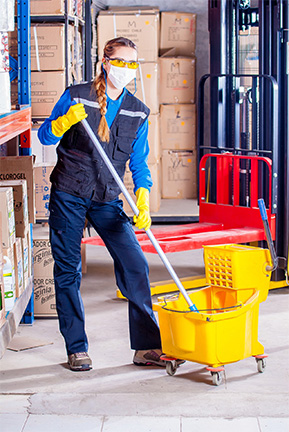 When cleaning an area, be sure to wear your PPE. You also don't want to breathe the fumes of the cleaning solution, so open a window or door and allow air to flow through the area if you are cleaning indoors.
When cleaning an area, be sure to wear your PPE. You also don't want to breathe the fumes of the cleaning solution, so open a window or door and allow air to flow through the area if you are cleaning indoors.
Clean or wash off any visible dirt or other debris from the surface or from the item being cleaned with mild soap detergent and water then rinse.
Mix the appropriate amount and concentration of bleach solution for the areas or items being cleaned. Remember your PPE and be careful not to splash the solution on your self or areas you don't want bleached.
Use a sponge or rag to apply the solution to to the area or items being cleaned. Leave the solution on the surface for the recommended period of time to kill the germs.
Rinse the bleach solution off the surface area or item with clean water and then let air dry completely before using.
Rinse all sponges, rags, buckets, bottles, and other cleaning supplies and let air dry.
12 Areas: Hygiene and Sanitation
Click Here
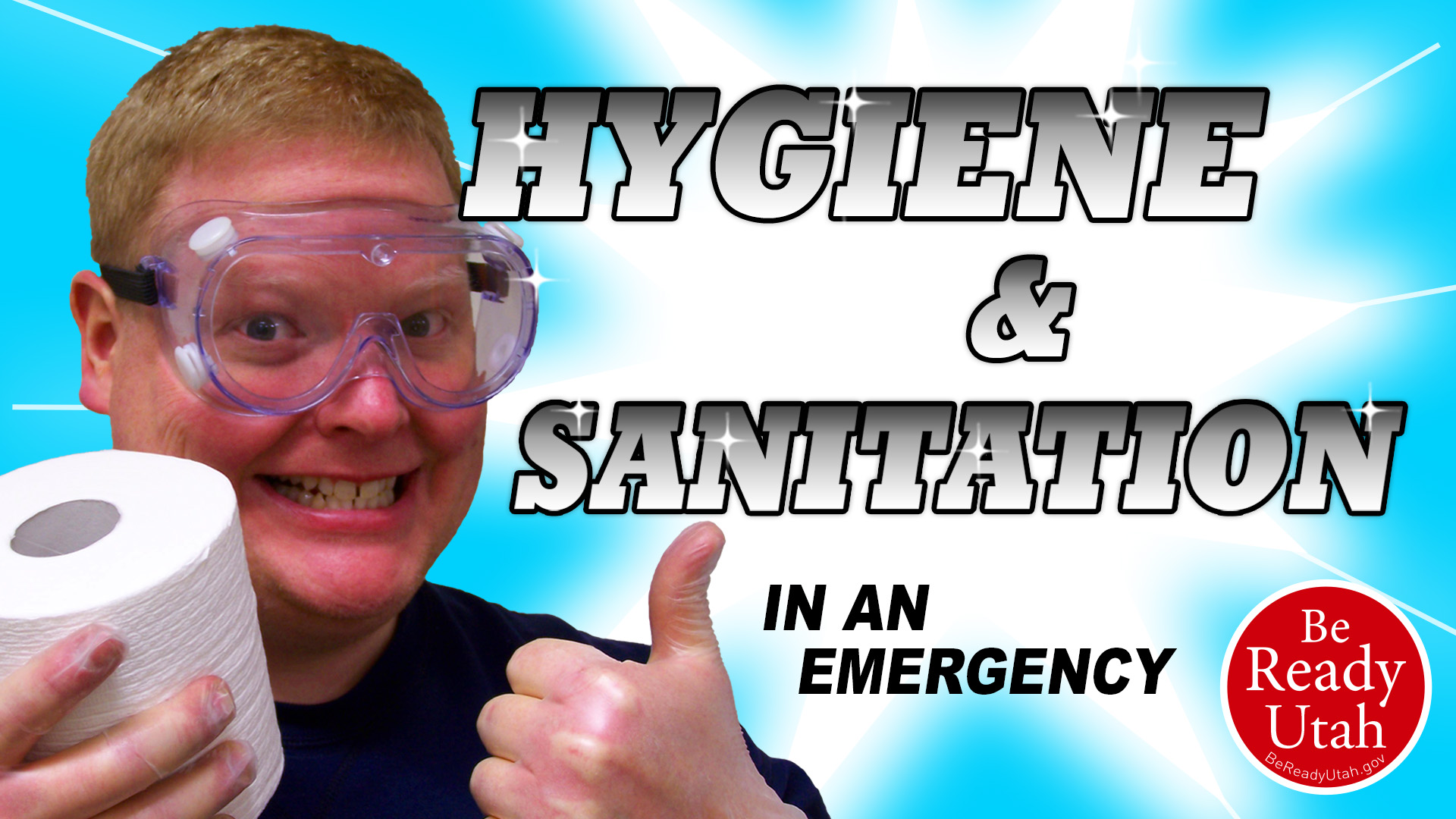
Disaster Supply Kit: Hygiene and Sanitation
Click Here

Garbage and Trash in an Emergency
Click Here
